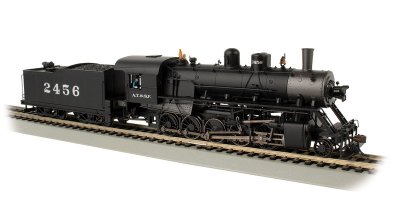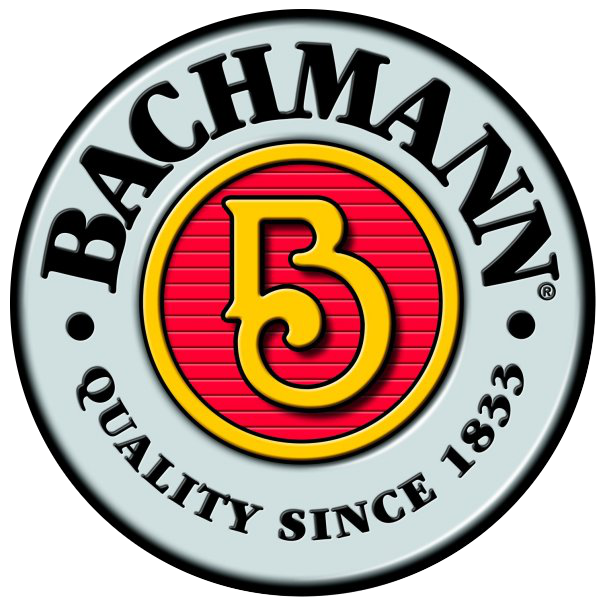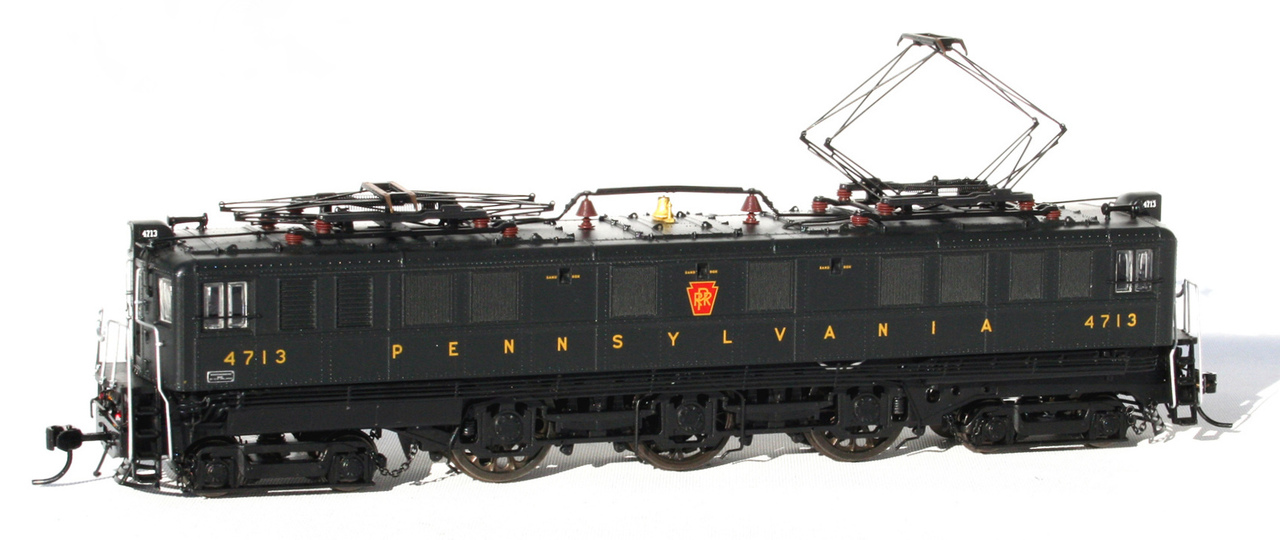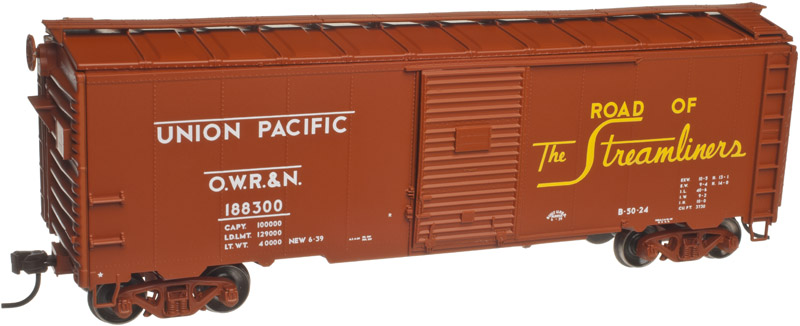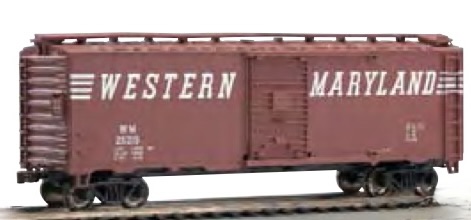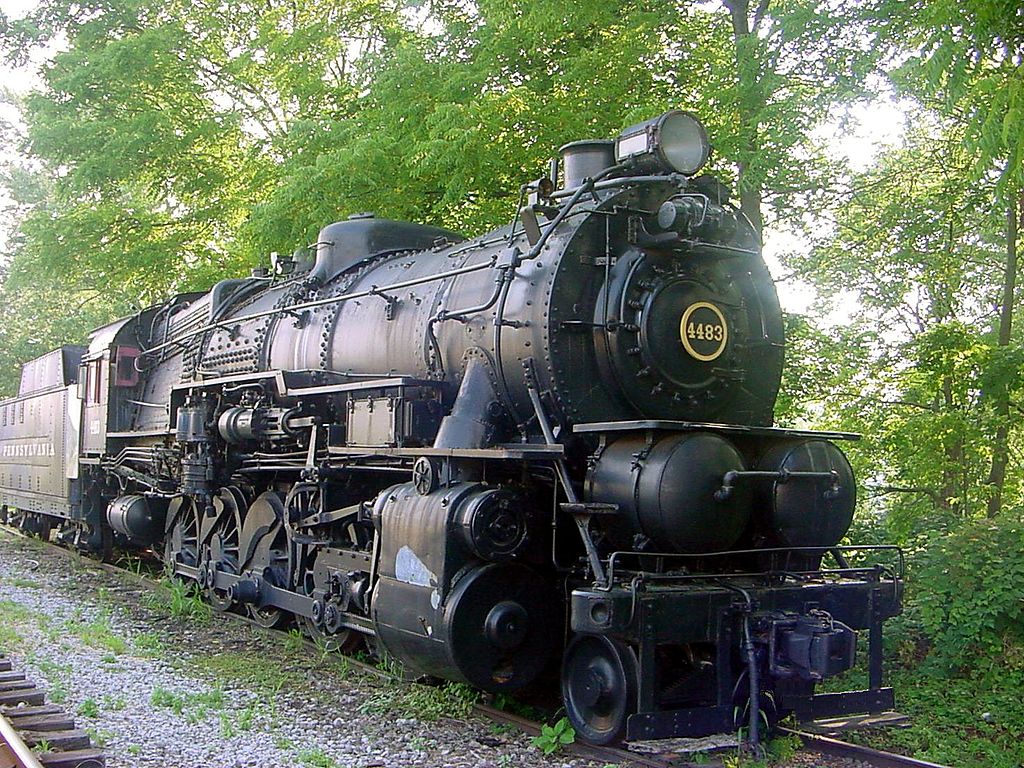Prototype Information: Under the Whyte notation for the classification of steam locomotives, 2-10-0 represents the wheel arrangement of two leading wheels on one axle, ten powered and coupled driving wheels on five axles, and no trailing wheels. This arrangement was often named Decapod, especially in the United States, although this name was sometimes applied to locomotives of 0-10-0 "Ten-Coupled" arrangement, particularly in the United Kingdom. In the United States, the 2-10-0 was not widely popular but was a favorite of a small number of railroads which operated mostly in mountainous terrain. Among these was the Erie Railroad, a major Chicago to New York trunk line railroad.
The 2-10-0's main advantage was that five out of six of its axles were powered, meaning almost all the weight was available for traction rather than being distributed over pilot and trailing wheels. The long rigid wheelbase caused problems on tightly curved track, so blind drivers were the norm, either on the central axle, and/or on the second and/or fourth axles. Often lateral motion devices were attached to the leading drive axle.
The wheel arrangement's disadvantages included the firebox size restriction caused by the lack of trailing wheel. This meant the firebox was fitted in between the wheels (common on earlier locomotives) and was long and narrow, or if mounted above the driving wheels, was wide and long but shallow. Many locomotives chose the latter option. A firebox mounted over the drivers also restricted the diameter of the driving wheels, which in turn limited speed. As with the Consolidation (2-8-0), "chopping" at speed ensured a rough ride for the crew due to instability caused by the wheel arrangement. In fact, backing any locomotive without a trailing axle was restricted to under twenty miles per hour or less. Most 2-10-0s were not operated at speeds greater than 50 mph (80 km/h).
From Wikipedia
The 2-10-0's main advantage was that five out of six of its axles were powered, meaning almost all the weight was available for traction rather than being distributed over pilot and trailing wheels. The long rigid wheelbase caused problems on tightly curved track, so blind drivers were the norm, either on the central axle, and/or on the second and/or fourth axles. Often lateral motion devices were attached to the leading drive axle.
The wheel arrangement's disadvantages included the firebox size restriction caused by the lack of trailing wheel. This meant the firebox was fitted in between the wheels (common on earlier locomotives) and was long and narrow, or if mounted above the driving wheels, was wide and long but shallow. Many locomotives chose the latter option. A firebox mounted over the drivers also restricted the diameter of the driving wheels, which in turn limited speed. As with the Consolidation (2-8-0), "chopping" at speed ensured a rough ride for the crew due to instability caused by the wheel arrangement. In fact, backing any locomotive without a trailing axle was restricted to under twenty miles per hour or less. Most 2-10-0s were not operated at speeds greater than 50 mph (80 km/h).
From Wikipedia
Road/Company Information: The Atchison, Topeka and Santa Fe Railway (reporting mark ATSF), often abbreviated as Santa Fe or AT&SF, was one of the larger railroads in the United States. Chartered in February 1859, the railroad reached the Kansas-Colorado border in 1873 and Pueblo, Colorado, in 1876. To create a demand for its services, the railroad set up real estate offices and sold farm land from the land grants that it was awarded by Congress. Despite the name, its main line never served Santa Fe, New Mexico, as the terrain was too difficult; the town ultimately was reached by a branch line from Lamy.
The Santa Fe was a pioneer in intermodal freight transport, an enterprise that (at one time or another) included a tugboat fleet and an airline (the short-lived Santa Fe Skyway). Its bus line extended passenger transportation to areas not accessible by rail, and ferryboats on the San Francisco Bay allowed travelers to complete their westward journeys to the Pacific Ocean. The ATSF was the subject of a popular song, Harry Warren & Johnny Mercer's "On the Atchison, Topeka and the Santa Fe", written for the film, The Harvey Girls (1946).
The railroad officially ceased operations on December 31, 1996, when it merged with the Burlington Northern Railroad to form the Burlington Northern & Santa Fe Railway.
Read more on Wikipedia.
The Santa Fe was a pioneer in intermodal freight transport, an enterprise that (at one time or another) included a tugboat fleet and an airline (the short-lived Santa Fe Skyway). Its bus line extended passenger transportation to areas not accessible by rail, and ferryboats on the San Francisco Bay allowed travelers to complete their westward journeys to the Pacific Ocean. The ATSF was the subject of a popular song, Harry Warren & Johnny Mercer's "On the Atchison, Topeka and the Santa Fe", written for the film, The Harvey Girls (1946).
The railroad officially ceased operations on December 31, 1996, when it merged with the Burlington Northern Railroad to form the Burlington Northern & Santa Fe Railway.
Read more on Wikipedia.
Brand/Importer Information: Bachmann Industries (Bachmann Brothers, Inc.) is a Bermuda registered Chinese owned company, globally headquartered in Hong Kong; specialising in model railroading.
Founded in Philadelphia, Pennsylvania, the home of its North American headquarters, Bachmann is today part of the Kader group, who model products are made at a Chinese Government joint-venture plant in Dongguan, China. Bachmann's brand is the largest seller, in terms of volume, of model trains in the world.[citation needed] Bachmann primarily specializes in entry level train sets, and premium offerings in many scales. The Spectrum line is the high quality, model railroad product line, offered in N, HO, Large Scale, On30, and Williams O gauge all aimed for the hobbyist market. Bachmann is the producer of the famous railroad village product line known as "Plasticville." The turnover for Bachmann model trains for the year ended 31 December 2006 was approximately $46.87 million, a slight increase of 3.36% as compared to 2005.
Founded in Philadelphia, Pennsylvania, the home of its North American headquarters, Bachmann is today part of the Kader group, who model products are made at a Chinese Government joint-venture plant in Dongguan, China. Bachmann's brand is the largest seller, in terms of volume, of model trains in the world.[citation needed] Bachmann primarily specializes in entry level train sets, and premium offerings in many scales. The Spectrum line is the high quality, model railroad product line, offered in N, HO, Large Scale, On30, and Williams O gauge all aimed for the hobbyist market. Bachmann is the producer of the famous railroad village product line known as "Plasticville." The turnover for Bachmann model trains for the year ended 31 December 2006 was approximately $46.87 million, a slight increase of 3.36% as compared to 2005.
Item created by: gdm on 2020-01-27 13:46:33. Last edited by gdm on 2020-01-27 13:49:43
If you see errors or missing data in this entry, please feel free to log in and edit it. Anyone with a Gmail account can log in instantly.
If you see errors or missing data in this entry, please feel free to log in and edit it. Anyone with a Gmail account can log in instantly.


